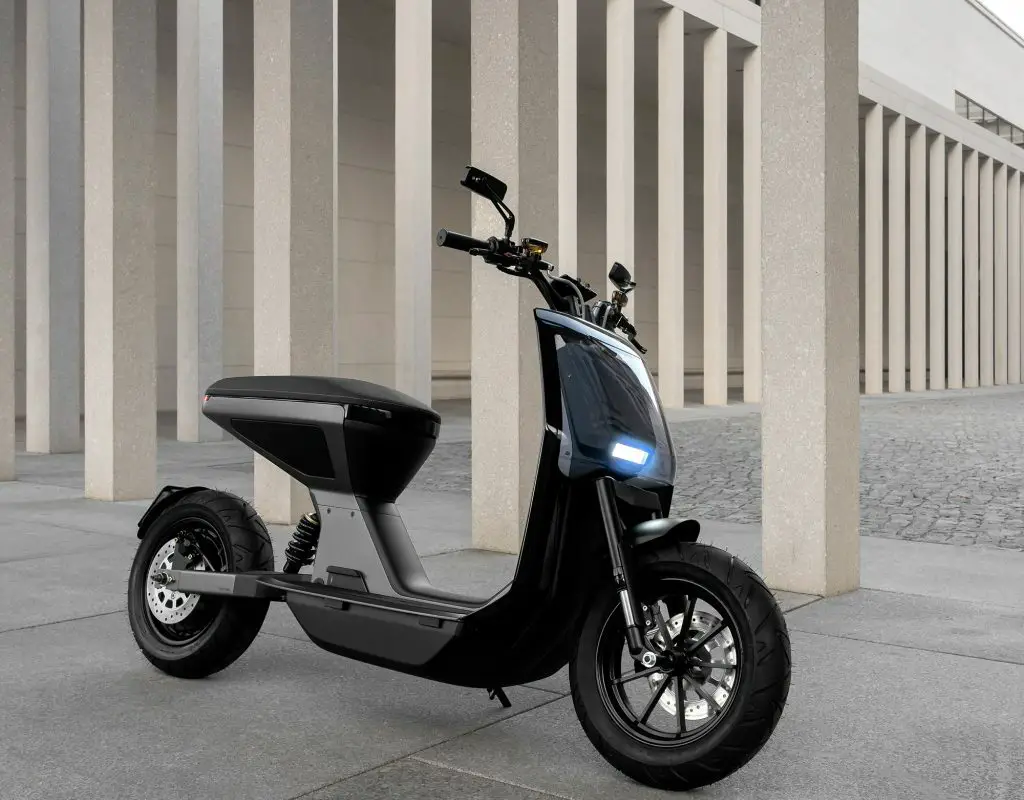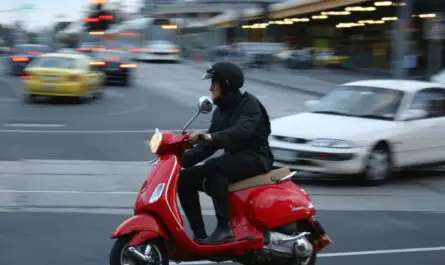If your scooter is going in reverse, it might seem a little strange to you. Please do not stick your face near the exhaust, just stand next to the scooter and start the inspection.
Here are the 3 main tips to follow to prevent your scooter from rolling in reverse:
- Check if the floats are not stuck and open
- Check if the butterfly valves are stuck and open
- Adjust the air / fuel screw
Tip 1: Check the floats on your scooter
Check your floats every 3 months, if they are stuck they are fairly easy to fix and will probably only take you an hour or two. There are a few signs of sticking the floats open, including rich running, very high RPM after starting the motorcycle, and fuel overflow from the carburetor.
Floats are small bubbles that are located in the carburetor bowl, at the bottom of the carburetor. If you remove the bowl (usually 3 or 4 screws at the bottom of the carburetor), the floats hang down a bit. It's a bit like looking inside a toilet tank. This large bubble which rises and falls with the water level is a float. Your carburetor has one in each of the tanks.
How to adjust your floats:
Before you start disassembling anything, be sure to take photos on your phone. You think you're going to remember how to put it all together, but I promise you won't. To clean the floats and make sure they don't stick, just remove the bowl and there will be a pin in each float. Using a small, sharp object, push this pin to the side and the float will release. There is a small part attached to each float that looks like a tiny little missile. This is called the cap, which cuts off the flow of fuel from the tank when the level is high enough in the carburetor. This is a neat little feature that helps prevent the engine from constantly being flooded.
This operation is much easier to perform if the carburetor is completely removed from the motorcycle, but it is not a requirement. After removing the float and plug, spray everything inside the carburetor very well with carburetor cleaner, especially the small hole where the plug goes. You can even use a small toothpick and try cleaning the interior walls where the plug fits. This can help him find better housing.
Each section of the carburetor has its own float and plug. So be sure to clean them all, unless you know exactly which cylinder is involved. Thoroughly clean the float, plug and rod before putting them back in place. The pin should be very easy to push in and out. If it is tight, you have done something wrong and you need to pull it out again.
Product you will need:
- Carburetor repair kit (Float included): If the old one is worn out
- Carburetor cleaner
- Key to remove the carburetor
Tip 2: Check the butterfly valve
The butterfly valve is the round disc located on each port of the carburetor that opens and closes when you turn the throttle with your hand. These valves are controlled by very tight springs on the carburetor body and if any of these springs break or come off the valve will not close properly which may cause may cause wheezing.
How to check the butterfly valve on your scooter:
To find out if your scooter may be suffering from this problem, you need to remove the air filter and look through the carburetor hole as you twist the throttle cable. If you open accelerator and the valve turns in the same direction, it means it is working properly. If not, you know the problem is there. It is therefore important to change the butterfly valve on your scooter in order to avoid seeing your scooter rolling in reverse.
Product you will need:
Tip 3: Adjust the air / fuel screw
Each carburetor has a small screw located somewhere on the carburetor body called a fuel screw, idle screw, or air / fuel screw. Some manufacturers call it differently. But its purpose is to regulate the amount of fuel that is sucked into the cylinders before combustion. If your scooter is going in reverse, this is the first thing to check.
Some old scooters vibrate considerably when running and, over time, can cause the carburetor body feed screw to loosen and provide more or less fuel. Consult your workshop manual in the carburetor section and determine whether you need to tighten or loosen the screw.
How to adjust the air / fuel screw:
The air / fuel screw is usually located near the bottom of the carburetor body on the left side. This is a small screw that requires a flat-bladed screwdriver and is often found near the gasoline inlet.
Quick Tip: Always use the correct size flat blade to adjust the air / fuel screw. Using the wrong size blade (especially if it is too small) can easily damage the screw and make it very difficult to adjust.
Product you will need:
Learn more about your scooters:
Here is an article that serves as a guide and helps you choose your scooter better before purchasing. For this, we give you the details on the characteristics and the different types of scooter.




